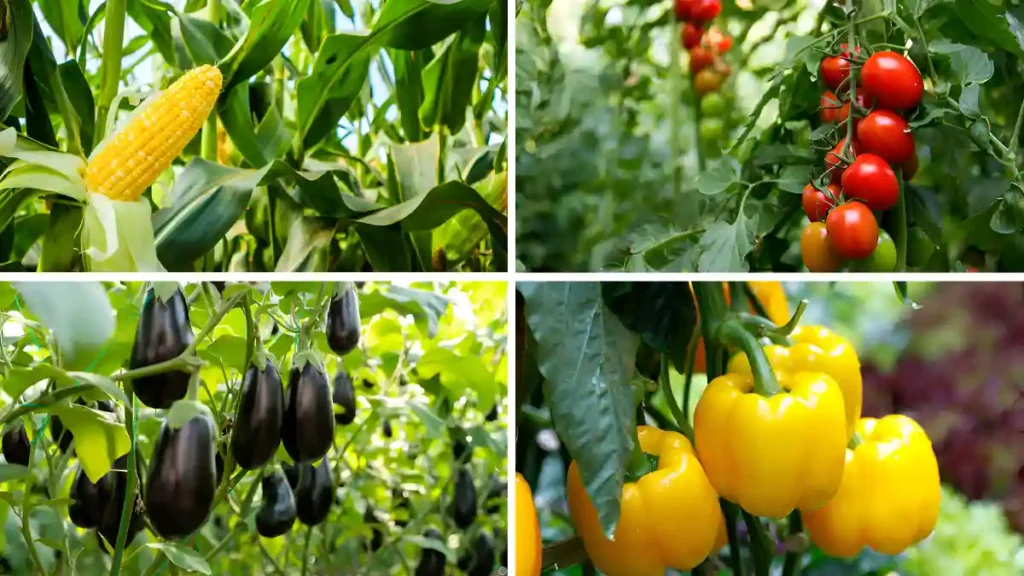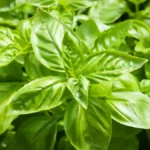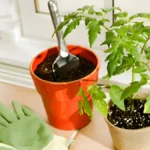Savoring the abundance of fresh veggies straight from your garden is best done in the summer. There is no greater sense of satisfaction than raising your food, regardless of gardening experience level. The top 10 summer vegetables that do well in warm weather will be discussed in this book, along with advice on how to cultivate them successfully.
10 best summer vegetables to grow:
- Tomatoes: Tomatoes: Known for their juicy flavor and adaptability, tomatoes are a summertime staple vegetable. They are available in different shapes, sizes, and colors; cherry tomatoes and beefsteak tomatoes are among them. Plant them in soil that drains properly, and give their vines support as they grow.For maximum yields, select a location that receives full sun, and give regular watering and extra fertilizer. Put off transplanting outside until it is at least 55 degrees Fahrenheit at night.
- Sweet Potatoes: Packed in nutrients, these tubers are an excellent source of fiber, vitamin C, beta-carotene, and trace minerals. This tropical food, in contrast to conventional potatoes, requires several months of heat to flourish.Once soil temperature reaches at least 60 degrees F, plant tuber slips in a sunny site with rich, well-draining soil. Use one inch of water per week to keep the area evenly moist. Cease watering 2 to 3 weeks before harvesting when foliage begins to turn yellow.
- Cucumbers: Cucumbers are great in salads and pickling, and they grow well in hot climates. To keep the soil continuously moist, they need regular irrigation and lots of sunlight. Cucumber trellising can increase air circulation, save space, and produce healthier plants.
- Basil: An essential component of any summer garden, even though it’s actually a herb. It brings vibrant taste to a range of meals and grows well in warm climates. To promote bushy growth and extend the harvest, plant basil in well-drained soil and pinch off the blossoms.
- Bell Peppers: Bell peppers give summertime recipes a bright color and a sweet taste. Plant them in a bright area with healthy soil, as they need full sun and mild temperatures to thrive. When planting, till the soil with an all-purpose fertilizer designed specifically for vegetables, and maintain the plants well-hydrated. Staking or cages are necessary to prevent plants from bending over or breaking under the weight of the fruit.

- Okra: This heat-loving veggie is at its best during the sweltering summer months. Okra should be planted in a sunny area with rich, well-drained soil. as soon as the soil reaches 65–70 degrees Fahrenheit. Okra can withstand drought, but regular watering results in higher harvests. For optimal texture and productivity, harvest a few days after flowering when pods are still little.
- Eggplant: Commonly referred to as aubergines, eggplants are a heat-loving summertime vegetable. They like lots of sunshine and good, well-drained soil. Mulching the area surrounding the plants’ bases can aid in weed suppression and moisture retention.
- Green beans: Throughout the summer, an ample harvest of green beans can be obtained, and they are a simple crop to grow. They like warm, well-drained soil and weather. When the soil reaches 60 degrees Fahrenheit and the air temperature is between 65 and 85 degrees Fahrenheit, direct sow seeds outside. While bush beans can be sowed every few weeks throughout the summer for a continuous crop, pole beans can be harvested from mid-summer into fall. To increase output, make use of containers and trellises that take up less room.
- Corn: Growing well in high temperatures and lots of sunlight, corn is a traditional summer food. To guarantee enough pollination, plant maize in blocks as opposed to single rows. Make sure to supply steady moisture, particularly in the crucial stages of silking and tasseling.
- Summer Squash: In the summer garden, summer squash varieties like pattypan and yellow squash grow a lot. Pick a sunny spot with soil that drains well and is rich. When the soil temperature hits 70 degrees Fahrenheit, plant in rows or hills and directly sow seeds. Every week, plants require one to two inches of water. The risk of foliar disease can be decreased by using drip irrigation. Fruit-bearing female flowers trail after male blossoms.
Conclusion:
These ten best summer vegetables can flourish in your garden and provide you an abundant harvest to savor all year long with the correct care and attention. The taste of fresh produce from your own garden is unmatched, whether you’re producing cucumbers for cool salads or tomatoes for your own handmade salsa. Thus, put on your work gloves, get your hands dirty, and relish the results!
Certainly! If you’d like to learn more, please consider following our WhatsApp Channel: Harvest Gardening
A frequently asked questions:
Q1: How should I store summer vegetables to keep them fresh?
A1: Summer vegetables such as bell peppers, cucumbers, tomatoes, and zucchini should be kept out of direct sunlight and kept at room temperature. With a paper towel to absorb moisture, store leafy greens in a plastic bag in the refrigerator. Till it’s time to utilize it, corn should be refrigerated and maintained in its husk.
Q2: What fruits and vegetablesto plant in the summer?
A2: Planting tomatoes, cucumbers, peppers, beans, and squash is best done in the summer. The extended daylight hours and higher temperatures are ideal for these.
Q3: What vegetables are typically included in roasted summer vegetables?
A3: Summer vegetables like bell peppers, zucchini, cherry tomatoes, red onions, and yellow squash are frequently roasted.



